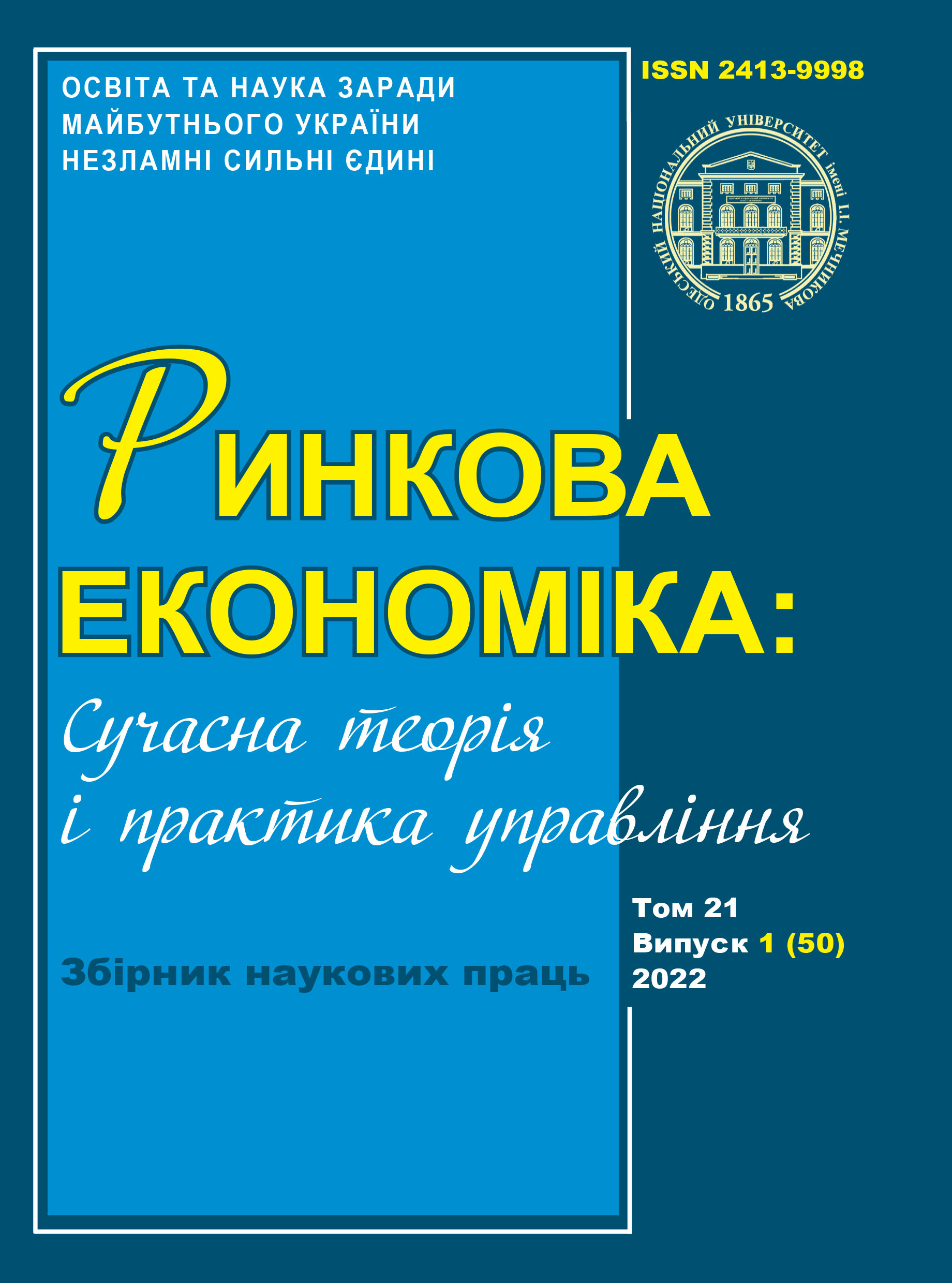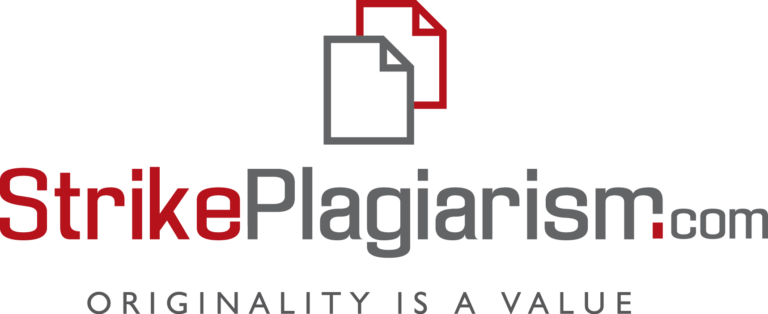«РОЗУМНІ ФАБРИКИ»: ПЕРЕДУМОВИ ВИНИКНЕННЯ ТА ПЕРСПЕКТИВИ РОЗВИТКУ
DOI:
https://doi.org/10.18524/2413-9998.2022.1(50).270418Ключові слова:
Четверта промислова революція, Індустрія 4.0, кіберфізичні системи, розумне виробництво, розумна фабрика, смарт-підприємство, смарт-промисловість, інформаційно-комунікаційні технології (ІКТ)Анотація
Статтю присвячено теоретичному дослідженню появи та розвитку «розумних фабрик». Досліджується процес появи, становлення та розвитку Четвертої промислової революції. «Розумне виробництво» та «розумна фабрика» визначаються як ключові компоненти Індустрії 4.0. Розкривається сутність та значення кіберфізичних систем, їх роль та значення у виробничих процесах. Описуються ключові етапи розвитку інтелектуального виробництва у світі. Узагальнено підходи до трактування поняття «розумна фабрика». На основі проведеного аналізу названі основні можливості, які надає впровадження та використання смарт-виробництв. Проводиться аналіз технічних, соціально-економічних та інституційних бар’єрів, які виникають на шляху розвитку смарт-промисловості, визначається потенціал розвитку смарт-підприємств, зокрема «розумних фабрик».
Посилання
Lu, Y., Huang, H., Liu, C., & Xu, X. (2019). Standards for Smart Manufacturing: A review. In 2019 IEEE 15th International Conference on Automation Science and Engineering (CASE) . IEEE. https://doi.org/10.1109/coase.2019.8842989
Industry 4.0. IT-Enterprise. Retrieved from https://www.it.ua/knowledge-base/technology-innovation/industry-4 [in Ukrainian].
Lucke, D., Constantinescu, C., & Westkämper, E. (n.d.). Smart Factory - A Step towards the Next Generation of Manufacturing. Manufacturing Systems and Technologies for the New Frontier, 115–118. https://doi.org/10.1007/978-1-84800-267-8_23
McKinsey Global Institute (June 2015). The internet of things: mapping the value beyond the hype (131 p.). McKinsey & Company.
The Smart Factory (2017). Deloitte University Press. Retrieved from https://www2.deloitte.com/content/dam/insights/us/articles/4051_The-smart-factory/DUP_The-smart-factory.pdf
Filos, E. (2008). Smart Organizations in the Digital Age. In M. Jennex (Eds.), Knowledge Management: Concepts, Methodologies, Tools, and Applications (pp. 48-72). IGI Global. https://doi.org/10.4018/978-1-59904-933-5.ch005
Mezina, T. V. (2018). Klassirovanie industrii 4.0 v tehnologicheskom protsesse [Classification of industry 4.0 in the technological process]. Economy vector, (6). Retrieved from http://elib.fa.ru/art2018/bv1217.pdf [in Russian].
Kniaziev, S. I. (2020). Smart-promyslovist: formuvannia bazysu novoho etapu ekonomichnoho zrostannia u sviti [Smart Industry: Building the Basis for a New Stage of Economic Growth in the World]. Business Inform, (4), 150-162 [in Ukrainian].
Schwab, К. (2016). The Fourth Industrial Revolution. What It Means and How to Respond. World Economic Forum. Retrieved from https://www.weforum.org/agenda/2016/01/the-fourth-industrial-revolution-what-it-means-and-how-to-respond/
Herrmann, Frank. (2018). The Smart Factory and Its Risks. Systems, 6(4), 38. https://doi.org/10.3390/systems6040038
Marr, Bernard (2018). What is Industry 4.0? Here's A Super Easy Explanation For Anyone. Forbes. Retrieved from https://www.forbes.com/sites/bernardmarr/2018/09/02/what-is-industry-4-0-heres-a-super-easy-explanation-for-anyone/?sh=a72470b9788a
Kniaziev, S. I. (2017). Development of smart industry as an efficient way to implement the policy of neoindustrialization in the world. Industrial economics, (4(80)), 5-18.
Herbert, L. (2017). Digital Transformation: Build Your Organization’s Future for the Innovation Age (1st ed.). London, UK: Bloomsbury Business.
Bauernhansl, T., Hompel, M. T., & Vogel-Heuser, B. (2014). Industrie 4.0 in Produktion, Automatisierung und Logistik. Anwendung, Technologien, Migration. Wiesbaden, Germany: Springer Vieweg.
Mabkhot, M. M., Al-Ahmari, A. M., Salah, B., & Alkhalefah, H. (2018). Requirements of the Smart Factory System: A Survey and Perspective. Machines, 6, 23.
Srewil, Yaseen & Scherer, Raimar. (2013). Effective Construction Process Monitoring and Control through a Collaborative Cyber-Physical Approach. https://doi.org/10.1007/978-3-642-40543-3_19
Zanni, A. (2015). Cyber-physical systems and smart cities. IBM. Retrieved from https://www.yumpu.com/en/document/read/38401163/ba-cyber-physical-systems-and-smart-cities-iot-pdf
Smart Factory. IT-Enterprise. Retrieved from https://www.it.ua/knowledge-base/technology-innovation/smart-factory [in Ukrainian].
A Brief History Of Smart Manufacturing. Manufacturing Operations Management Talk. Retrieved from https://www.manufacturing-operations-management.com/manufacturing/2021/06/a-brief-history-of-smart-manufacturing.html
Implementing 21st Century Smart Manufacturing. Workshop Summary Report. (June 2011). Smart Manufacturing Leadership Coalition. Retrieved from https://www.controlglobal.com/assets/11WPpdf/110621_SMLC-smart-manufacturing.pdf
The German Standardization Roadmap for Industrie 4,0 Version 4. (2014). DKE German Commission for Electrical, Electronic & Information Technologies of DIN and VDE. Retrieved from https://www.din.de/resource/blob/65354/1bed7e8d800cd4712d7d1786584a7a3a/roadmap-i4-0-e-data.pdf
Leiva, C. (2015). On the Journey to a Smart Manufacturing Revolution. IndustryWeek. Retrieved from https://www.industryweek.com/technology-and-iiot/systems-integration/article/21967056/on-the-journey-to-a-smart-manufacturing-revolution
Smart Manufacturing: Leveraging the Democratization of Innovation (2019). CESMII – The Smart Manufacturing Institute. Retrieved from https://www.compete.org/storage/EMCP_SmartManu_Program_FINAL.pdf
Lara, Magdiel, Saucedo, Jania, Marmolejo, Jose, Salais, Tomas, & Vasant, Pandian. (2020). Vertical and horizontal integration systems in Industry 4.0. Wireless Networks. https://doi.org/10.1007/s11276-018-1873-2
Nikitin, Yu. O., & Kulchytskyy O. I. (2018). «Smart» paradyhma yak osnova vyznachennia: rozumna orhanizatsiia, rozumna kompaniia, rozumna fabryka [«Smart» paradigm as the basis of definition: smart organization, smart company, smart factory]. Innovative economy, 1-2(73), 153–161. [in Ukrainian]
Annaswamy, S. (2021). What are smart factories? 7 misconceptions and a definition. IoT Analytics. Retrieved from https://iot-analytics.com/what-are-smart-factories/
What Is the Smart Factory and Its Impact on Manufacturing? (2019). OTTO. Retrieved from https://ottomotors.com/blog/what-is-the-smart-factory-manufacturing
Larosse, J. (2012). New Industrial Policy in Flanders: An Integrated Policy Framework for a New Productivity Revolution. Reflets et perspectives de la vie économique, LI, 99-115. https://doi.org/10.3917/rpve.511.0099
Yashchyshyna, I. V. (2018). Sut ta osoblyvosti smart-pidpryiemstv [Nature and features of smart factory]. Scientific notes of the National University of Ostroh Academy, 11(39), 14–18. [in Ukrainian]
Stupnytskyy, O. I., & Shved, I. V. (2020). Suchasni firmy: hlobalni vyklyky Industrii 4.0 [Modern firm: global challenges of industry 4.0]. Scientific Bulletin of Uzhhorod National University, 31, 126-133. [in Ukrainian]
Industry 4.0 at McKinsey’s model factories. (2016). McKinsey & Company, Inc. http://sf-eu.net/wp-content/uploads/2016/08/mckinsey-2016-industry-4.0-at-mckinseys-model-factories-en.pdf
CFE Media. (2016). Digital Report: IIoT. Consulting-Specifying Engineer Media (72 p.).
Vyshnevsky, V. P., Vietska, O. V., Garkushenko, O. M., Knyazev, S. I., Lyakh, O. V., Chekina, V. D., & Cherevatsky, D. Yu. (2018). Smart-promyslovist v epokhu tsyfrovoi ekonomiky: perspektyvy, napriamy i mekhanizmy rozvytku [Smart industry in the era of digital economy: prospects, directions and mechanisms of development]. Kyiv: NAS of Ukraine, Institute of Industrial Economics. [in Ukrainian]
World Economic Forum. (2015). Industrial Internet of Things: Unleashing the Potential of Connected Products and Services. Cologny/Geneva, Switzerland: World Economic Forum (39 p.).
##submission.downloads##
Опубліковано
Як цитувати
Номер
Розділ
Ліцензія

Ця робота ліцензується відповідно до Creative Commons Attribution-NonCommercial 4.0 International License.
Автори залишають за собою право на авторство своєї роботи та передають журналу право першої публікації цієї роботи на умовах ліцензії Attribution-NonCommercial 4.0 International (CC BY-NC 4.0).
Автори мають право укладати самостійні додаткові угоди щодо неексклюзивного розповсюдження роботи у тому вигляді, в якому вона була опублікована цим журналом (наприклад, розміщувати роботу в електронному сховищі установи або публікувати у складі монографії), за умови збереження посилання на першу публікацію роботи у цьому журналі.
Політика журналу дозволяє і заохочує розміщення авторами в мережі Інтернет (наприклад, у сховищах установ або на особистих веб-сайтах) роботи, оскільки це сприяє виникненню продуктивної наукової дискусії та позитивно позначається на оперативності та динаміці цитування опублікованої роботи (див. The Effect of Open Access).



